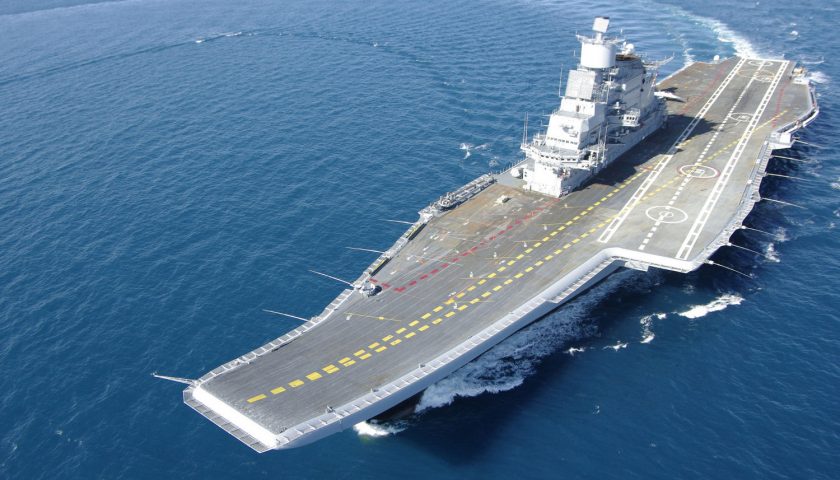Since the entry of the new aircraft carrier with springboard and catch line INS Vikrant in September 2022, the question around building a new ship, heavier and equipped with catapults, has been the subject of much debate in India. Paradoxically, the Indian Navy was clearly, and for several years, highly reserved on the relevance of building a ship that wanted to be India’s response to China’s new Type 003, with a displacement of over 65,000 tons and a catapult to implement the new one. TEDBF on-board fighter for Twin-Engine Deck-Based Combat Aircraft, designed by national aircraft manufacturer HAL and Indian weapons agency DRDO. According to the Indian admiral, the costs associated with developing such a vessel to complete the fleet consisted of two aircraft carriers INS Vikramaditya (ex Baku which Admiral Gorshkov later acquired from Russia in 2004, and INS Vikrant, the first ship of the local bill, a 44,000 pound carrier). tons equipped with Ski-jump and strand stops like the Vikramaditya, which should reach its first operational capacity by the end of 2023, will remove the credit needed to expand its fleet of 6 nationally designed nuclear attack submarines.
It seems that the Indian Navy and the Narendra Modi government, attached to symbols of power, have found a compromise. Instead of engaging in the development of a new expensive heavy aircraft carrier, it will prepare, according to the Indian press, to order a sister-ship to INS Vikrant, to bring India’s carrier fleet to 3 ships and thereby have a permanent naval air capability. As a reminder, a fleet of 4 ships is required to keep ships permanently at sea, as is the case for a fleet of nuclear ballistic missile submarines that form the French and British deterrent, 3 ships to guarantee the permanent availability of at least one ship 100% of the time. A 2-ship fleet ensures about 80% availability, while a single-ship fleet peaks, depending on usage mode, between 40 and 50% of the time in the best case.

According to Admiral R. Hari Kumar, Chief of Staff of the Indian Navy, the construction of a new carrier similar to the INS Vikrant with minor modifications could be completed in 8 years, allowing for a later switch to a 3 carrier aircraft format. At the same time, development of a replacement for the INS Vikramaditya, which will leave service in 2040, will be launched, and will probably relate to a new aircraft carrier model this time equipped with catapults and electromagnetic shielding strands , thereby spreading development costs but also technological risks. , while maintaining the format targeted by Indian naval aviation. New Delhi has, in any case to date, expressed no significant ambition to acquire a strong naval force projection capability, its carriers will primarily have the mission of responding to threats represented by other naval air capabilities, as currently deployed. in China, to dissuade the enemy from excessive ambition. In this area, STOBAR (brief take off but captured recovery) carriers such as the Vikrant and its sister ships will provide a very meaningful and well-dimensional capability with respect to foreseeable threats in the next 30 to 40 years.
The rest of this article is for subscribers only. – from €1 of the first month
Full access articles are available in the “Free Articles” section. Subscribers have access to full Analysis, News and Synthesis articles. Articles in the Archive (over 2 years) are reserved for Premium subscribers.
All subscriptions are non-binding.









